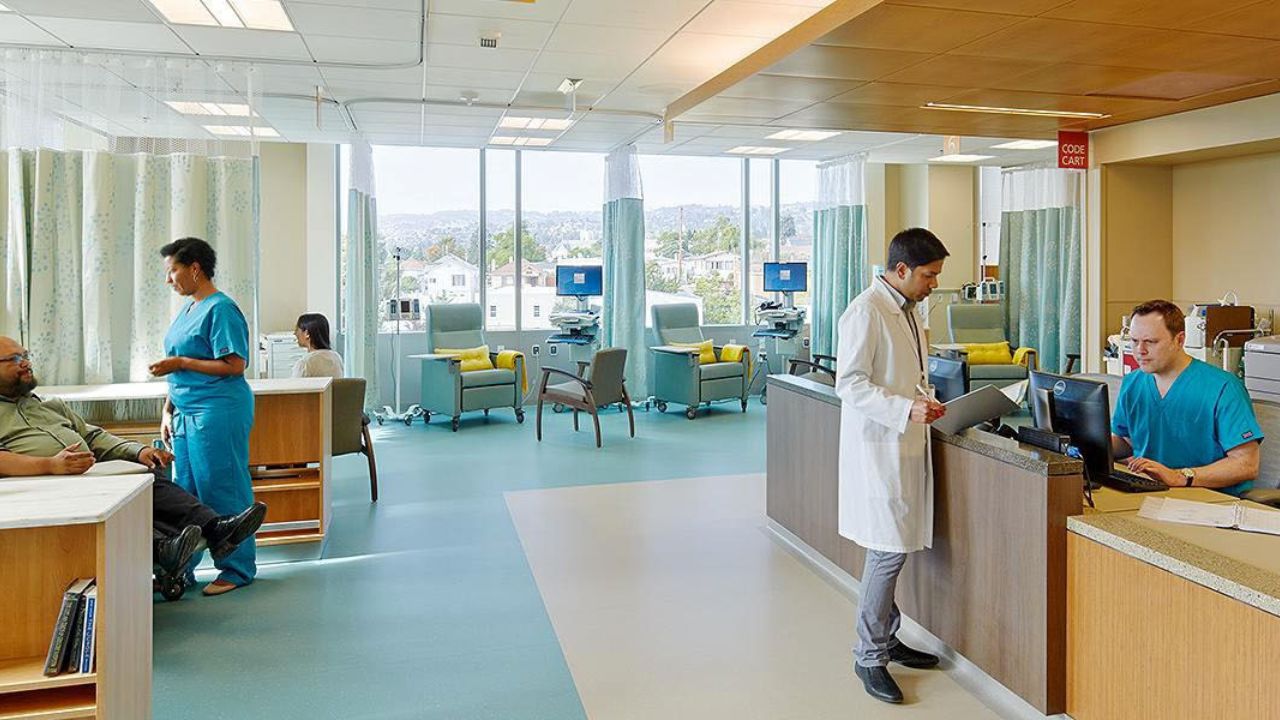Introduction
The landscape of healthcare regulation is continually evolving to meet the demands of technological innovation, patient safety, and efficient clinical workflows. One of the pivotal developments in recent years has been the recognition and permitting of Electronic Health Records (EHRs) to be utilized within the framework of CLIA (Clinical Laboratory Improvement Amendments) regulations.
Historically, CLIA has primarily governed laboratory testing quality, personnel qualifications, and operational standards but has been cautious in its engagement with digital health records, especially EHRs. However, in a paradigm shift, the Centers for Medicare & Medicaid Services (CMS) and the Food and Drug Administration (FDA) have begun to acknowledge the vital role of EHRs not only in clinical documentation but also in laboratory testing processes.
This shift opens new avenues for integrating laboratory data with EHRs, promoting automation, improving test result reporting, and enhancing overall patient care. This article delves into the background, regulatory changes, implications for laboratories and healthcare providers, challenges, and future directions of permitting EHRs under CLIA.
Background: The Role of CLIA in Laboratory Regulation
What is CLIA?
Established in 1988 under the Clinical Laboratory Improvement Amendments, CLIA is a federal regulatory program that oversees clinical laboratory testing in the United States. Its primary purpose is to ensure the accuracy, reliability, and timeliness of patient test results.
Key aspects of CLIA include:
- Certification requirements based on test complexity.
- Personnel qualification standards.
- Quality assurance and quality control procedures.
- Inspection and compliance monitoring.
- Proficiency testing requirements.
Scope of CLIA Regulations
CLIA applies to laboratories performing testing on human specimens for health assessment or diagnosis, prognosis, or disease management. The regulation applies regardless of the setting—be it hospital labs, physician office labs, or standalone testing facilities.
Historically, CLIA has focused on laboratory operations, personnel, and testing methodologies, with limited direct involvement in digital health records or data management systems.
The Traditional View of Laboratory Data Reporting
Paper-based and Laboratory-Generated Electronic Reports
In the past, CLIA-regulated laboratories primarily generated test reports on paper or via secure electronic data transfer. These reports are then integrated into the patient’s medical record through various means, often manual or semi-automated.
Limitations and Challenges
- Fragmentation: Data often resides in separate systems, making integration with EHRs complex.
- Error-prone reporting: Manual transfer increases risk of transcription errors.
- Delayed reporting: Manual processes can delay result delivery.
- Limited automation: Lack of standardized interfaces hinders automation of data flow.
Need for Digital Integration
As healthcare increasingly relies on digital records, integrating laboratory data directly into EHRs enhances efficiency, reduces errors, and improves clinical decision-making.
Regulatory Evolution: Recognizing EHRs in CLIA Framework
Initial Caution and Resistance
Initially, CLIA and related agencies were cautious about endorsing EHRs for laboratory testing purposes, primarily due to concerns over data integrity, security, and the potential for misinterpretation.
The Shift in Perspective
Over time, technological advances, the proliferation of Health IT standards, and the emphasis on digital integration prompted regulators to reconsider. The recognition that EHRs can be accurate, secure, and integral to patient care led to policy adaptations.
Recent Policy Changes and Guidance
In recent years, CMS and the FDA have issued guidance and policy updates acknowledging the role of EHRs in laboratory testing workflows, including:
- Permitting certain laboratory data to be directly incorporated into EHRs.
- Recognizing that EHRs can serve as the primary record for laboratory test results.
- Establishing standards for digital reporting that comply with CLIA requirements.
The Significance of These Changes
This evolution signifies a major step toward modernizing laboratory regulation, supporting interoperability, and advancing a more integrated healthcare system.
Key Aspects of EHR Permissibility Under CLIA
What Does Permitting EHRs Mean?
Permitting EHRs under CLIA implies that laboratories can transmit test results directly into a patient’s electronic health record system, provided certain standards and safeguards are met. This approach emphasizes:
- Electronic result delivery: Results are integrated into EHRs in a structured, standardized manner.
- Automated data transfer: Minimizing manual transcription.
- Ensuring data integrity: Maintaining accuracy, completeness, and security.
Conditions and Requirements
Regulators stipulate that the integration of EHRs must adhere to:
- Data standards: Use of HL7, FHIR, LOINC, SNOMED, and other recognized standards.
- Security protocols: Encryption, access controls, audit trails.
- Validation and verification: Ensuring data transfer processes are accurate and reliable.
- Personnel competence: Staff must be trained in digital workflows and data management.
- Compliance with CLIA personnel standards: Ensuring that digital reporting does not compromise test quality.
Role of the Laboratory Director
The laboratory director remains responsible for ensuring that test performance and reporting meet CLIA standards, regardless of the reporting medium.
Implications for Laboratories and Healthcare Providers
Enhanced Workflow Efficiency
- Automated reporting: Speeds up result delivery.
- Reduced transcription errors: Direct digital transfer minimizes manual data entry.
- Streamlined operations: Integration allows for real-time updates and alerts.
Improved Data Accuracy and Completeness
- Structured data transfer ensures that all relevant information is captured uniformly.
- Facilitates data analytics, population health management, and quality improvement.
Better Patient Safety and Outcomes
- Timely, accurate results support prompt clinical decisions.
- Reduced errors and misinterpretation enhance patient safety.
Facilitating Regulatory Compliance
- Digital audit trails support compliance documentation.
- Standardized data formats help meet accreditation and quality assurance standards.
Challenges and Considerations
- Interoperability issues: Compatibility among diverse EHR systems.
- Data security: Protecting sensitive health information.
- Staff training: Ensuring personnel can manage and verify digital result transfer.
- Cost implications: Upgrading systems and workflows may require investment.
Technological Foundations: Standards and Infrastructure
Interoperability Standards
To enable seamless EHR integration, adherence to standards is critical:
- HL7 and FHIR: For structured data exchange.
- LOINC: For laboratory test coding.
- SNOMED CT: For clinical terminology.
- DICOM: For imaging data, if applicable.
- IHE profiles: For testing and workflow interoperability.
Secure Data Transmission
- Use of TLS (Transport Layer Security) encryption.
- Role-based access controls.
- Audit logging.
Validation and Testing Tools
- Use of conformance testing tools to verify data exchange accuracy.
- Regular system audits and updates.
Legal and Ethical Considerations
Data Privacy and Security
Ensuring compliance with HIPAA and other privacy regulations is paramount. Digital result transfer must incorporate:
- Patient consent management.
- Data encryption during transmission and storage.
- Robust access controls.
Data Ownership and Consent
Clarifying who owns the data and how patients can control access is essential, especially as digital sharing becomes more prevalent.
Liability and Accountability
Clear delineation of responsibilities between laboratories, EHR vendors, and healthcare providers in case of errors or breaches.
Challenges and Barriers to Implementation
Despite the regulatory approval, several hurdles remain:
- Technological fragmentation: Variability among EHR systems.
- Cost barriers: Upfront investments in infrastructure.
- Staff training needs: Ensuring personnel competence.
- Limited interoperability: Not all systems fully support standards.
- Legal ambiguities: Variations in state laws and consent requirements.
- Data security concerns: Risk of breaches during transfer.
Addressing these challenges requires collaborative efforts among stakeholders, including regulators, vendors, laboratories, and healthcare organizations.
Case Studies and Current Initiatives
Successful Implementations
- Large health systems: Many now transmit lab results directly into their EHRs using HL7 or FHIR standards, reducing turnaround times.
- Public health reporting: Integration with state health departments for disease surveillance.
Pilot Programs
- The FDA’s Digital Health Innovation Action Plan includes pilot projects testing digital result reporting.
- CMS initiatives promote digital integration to improve quality metrics.
Future Outlook and Policy Recommendations
Advancing Interoperability
- Continued development and adoption of universal standards.
- Incentivizing vendors to support seamless data exchange.
Strengthening Security
- Implementing advanced encryption and blockchain solutions.
- Regular security audits.
Expanding Digital Literacy
- Training staff on digital workflows.
- Educating patients on data privacy and access rights.
Supporting Smaller and Rural Labs
- Providing funding and technical assistance to upgrade infrastructure.
- Promoting cloud-based solutions.
Regulatory Evolution
- Clarifying legal frameworks around digital result transfer.
- Developing accreditation standards for digital reporting.
Integrating AI and Automation
- Using AI for data validation and anomaly detection.
- Automating test result interpretation and alerts.
Conclusion
The permitting of EHRs under CLIA marks a transformative milestone in laboratory medicine and healthcare delivery. It aligns regulatory frameworks with technological advances, promoting safer, faster, and more accurate laboratory testing workflows.
This evolution fosters better integration of laboratory data into clinical decision-making, enhances patient safety, and supports a more efficient healthcare system. While challenges remain, collaborative efforts, technological innovation, and policy support will be crucial in realizing the full potential of digital laboratory reporting.
Moving forward, embracing these changes will require ongoing commitment from regulators, laboratories, healthcare providers, and technology vendors—working together to build a future where digital health records and laboratory testing are seamlessly integrated for the benefit of all patients



